| Lesson 2 | OSI network model |
| Objective | Explain the OSI network model. |
OSI Network Model
Networking is the ability to exchange data between two or more applications across two or more computers. Because each computer on the network may be different (a Macintosh, a PC, a Sun workstation), networks must not only transport data,
they must translate protocols between dissimilar computers to assure compatibility at the hardware and software level.
To conceptualize the many translation steps required by the network server to successfully link computers, we can use the OSI network model. The model's purpose is to outline the logical processes required to exchange data between potentially dissimilar computers on a network.
To conceptualize the many translation steps required by the network server to successfully link computers, we can use the OSI network model. The model's purpose is to outline the logical processes required to exchange data between potentially dissimilar computers on a network.
- OSI Model:
The OSI (or Open Systems Interconnection) model conceived by the International Standards Organization (ISO), a U.N. agency, is a seven-layer framework for implementing protocols or tasks. The following series of images shows the function of each layer.
OSI Model
Seven Layers of the OSI Model
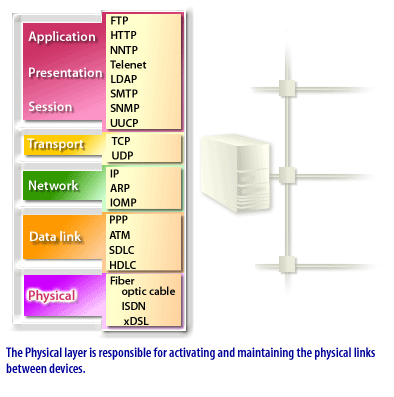
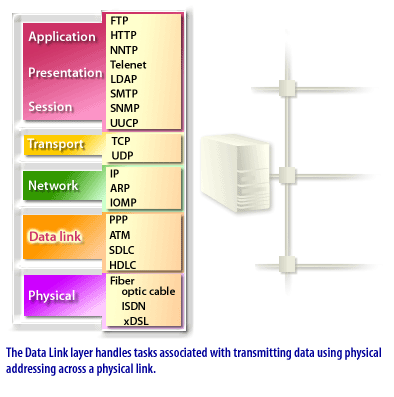
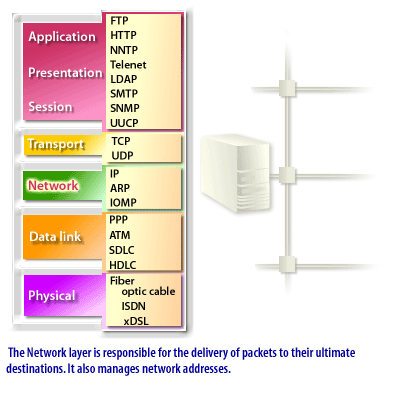
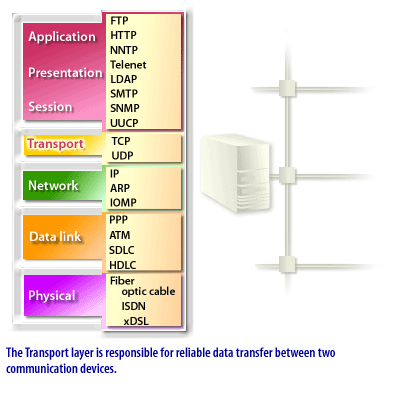
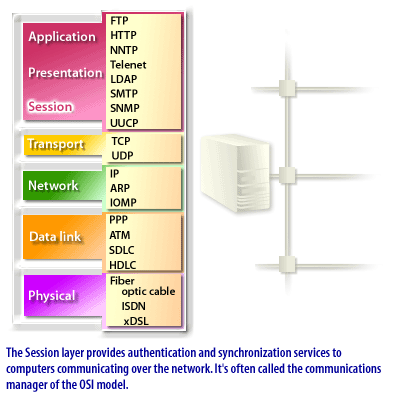
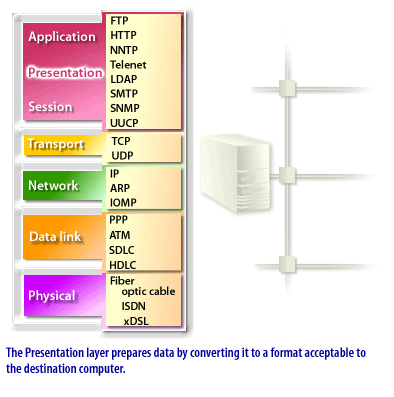
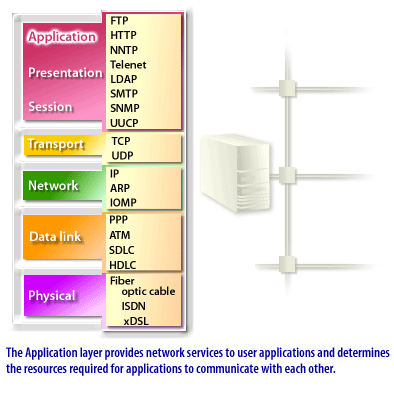
Layered Protocols
The term "Layered Protocols" within the context of the OSI (Open Systems Interconnection) Network Model refers to the structured set of protocols that operate at each of the seven distinct layers of the OSI model. Each layer in the OSI model serves a specific function in the processing and transmission of data across a network, and each has protocols that govern how tasks are performed within that layer. These protocols are designed to interact primarily with the protocols in the layer immediately above or below. Here is a brief overview of the layers and examples of protocols associated with each:
Layered protocols in the OSI model promote interoperability and standardization, making it easier for different network products to work together. They also simplify the process of developing and maintaining network hardware and software, as changes in one layer can often be made independently of the others.
- Physical Layer (Layer 1): Deals with the transmission and reception of the unstructured raw bit stream over a physical medium. It includes specifications for electrical, mechanical, procedural, and functional interfaces. Examples: Ethernet, RS-232, and cable systems.
- Data Link Layer (Layer 2): Responsible for node-to-node data transfer, error correction, and flow control. It frames data packets. Examples: Ethernet, PPP (Point-to-Point Protocol), and Switching.
- Network Layer (Layer 3): Manages device addressing, tracks the location of devices on the network, and determines the best way to move data. This layer makes routing decisions. Examples: IP (Internet Protocol), ICMP (Internet Control Message Protocol).
- Transport Layer (Layer 4): Responsible for data transfer between end systems and provides reliable data transfer services to the upper layers. Examples: TCP (Transmission Control Protocol), UDP (User Datagram Protocol).
- Session Layer (Layer 5): Manages sessions between applications. This includes the control and management of multiple bidirectional messages using connections (sessions). Examples: NFS (Network File System), NetBIOS (Network Basic Input/Output System).
- Presentation Layer (Layer 6): Ensures that data transferred from the application layer of one system can be read by the application layer of another. Tasks include translation, compression, and encryption. Examples: SSL (Secure Sockets Layer), TLS (Transport Layer Security).
- Application Layer (Layer 7): Closest to the end user. Both end-user and application-layer processes interact with software applications that contain a communications component. Examples: HTTP (Hypertext Transfer Protocol), FTP (File Transfer Protocol), SMTP (Simple Mail Transfer Protocol).
Layered protocols in the OSI model promote interoperability and standardization, making it easier for different network products to work together. They also simplify the process of developing and maintaining network hardware and software, as changes in one layer can often be made independently of the others.
Summary of Protocols and Layers
- Protocols connect entities on same level, within the layer
- Higher layers use services provided by lower layers
- Layers are independent and defined by interface provided to the higher layer and required from the lower layer
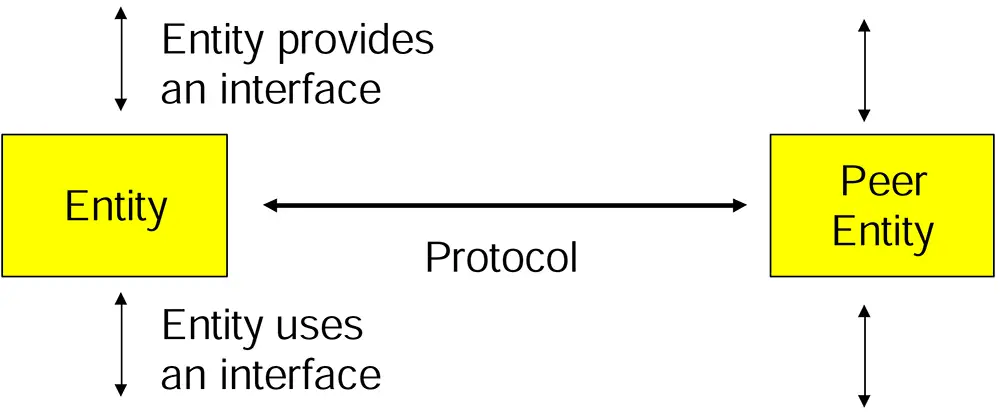
Entities communicate by exchanging Protocol Data Units (PDUs) with entities on the same level
OSI Model
Why Layers
- Layers may be exchanged as long as interfaces stay unchanged
- WWW was built on top of existing TCP/IP implementations,
- WWW does not have to care about the media (modem, Ethernet, radio link etc.),
- ATM can be used to transport IP packets without any changes to applications,
- IPv6 will replace the entire IP part of the TCP/IP layer
- Layering makes development easier and adds flexibility
In the next lesson, the infrastructure of the Internet will be discussed.